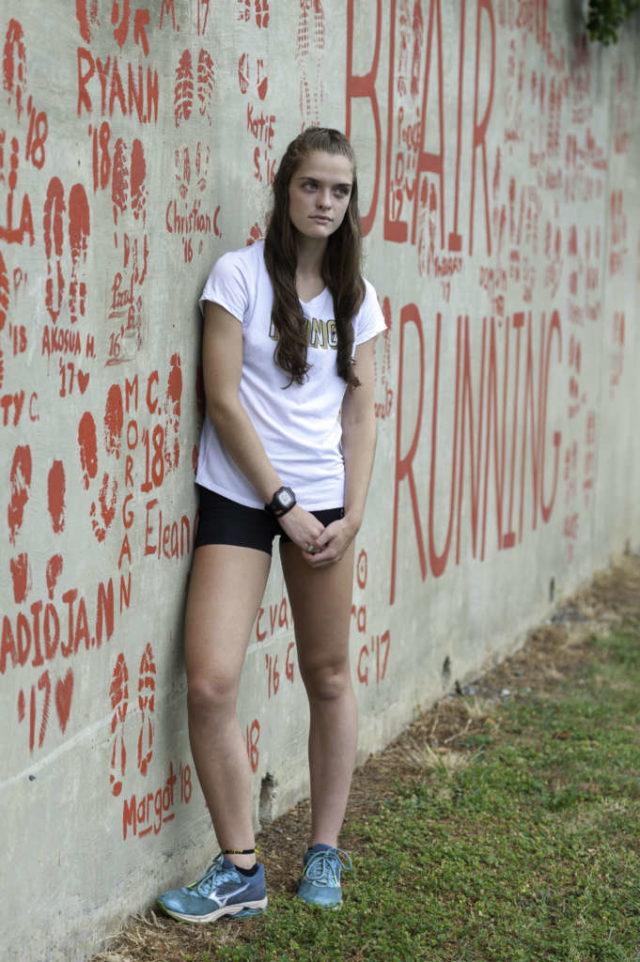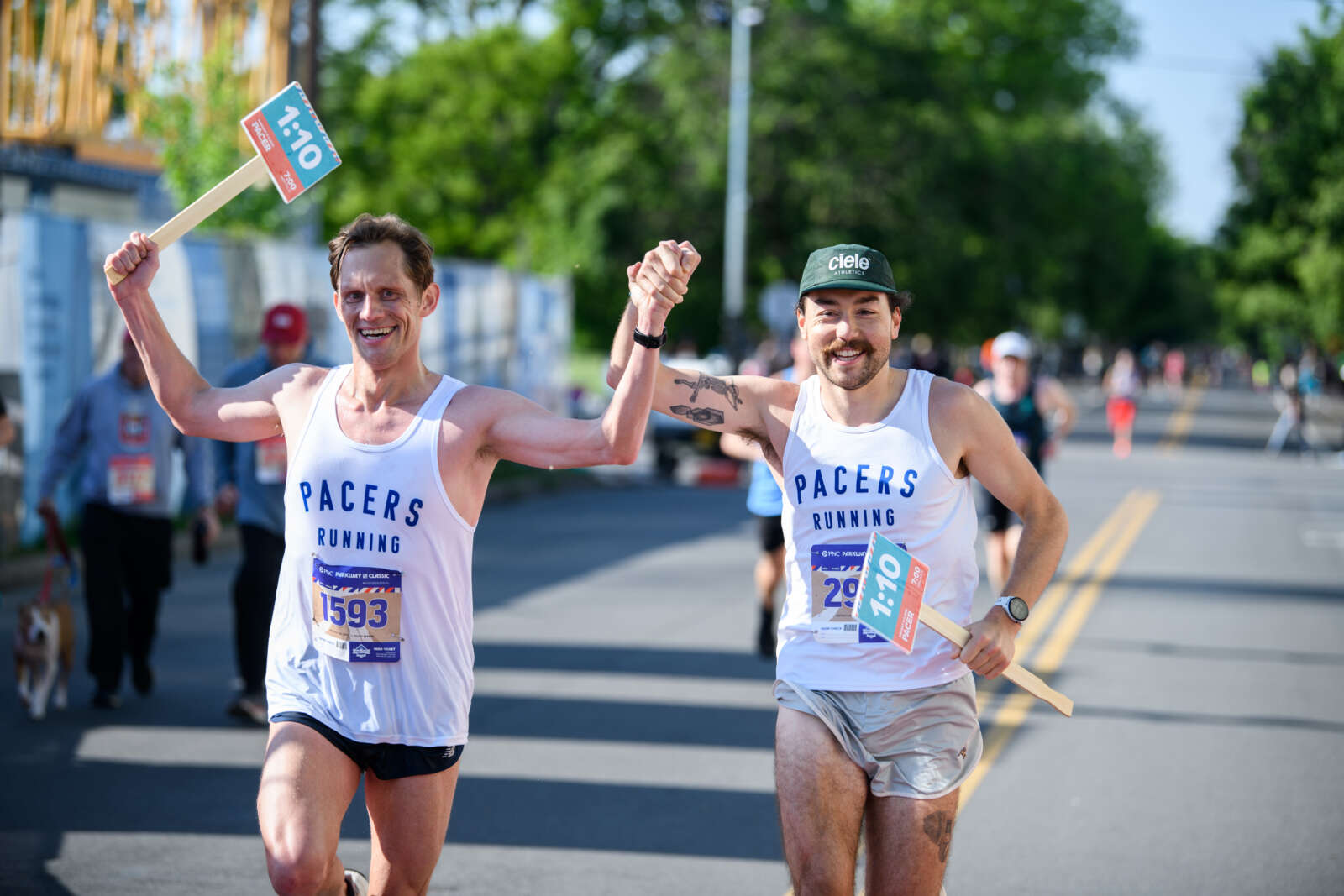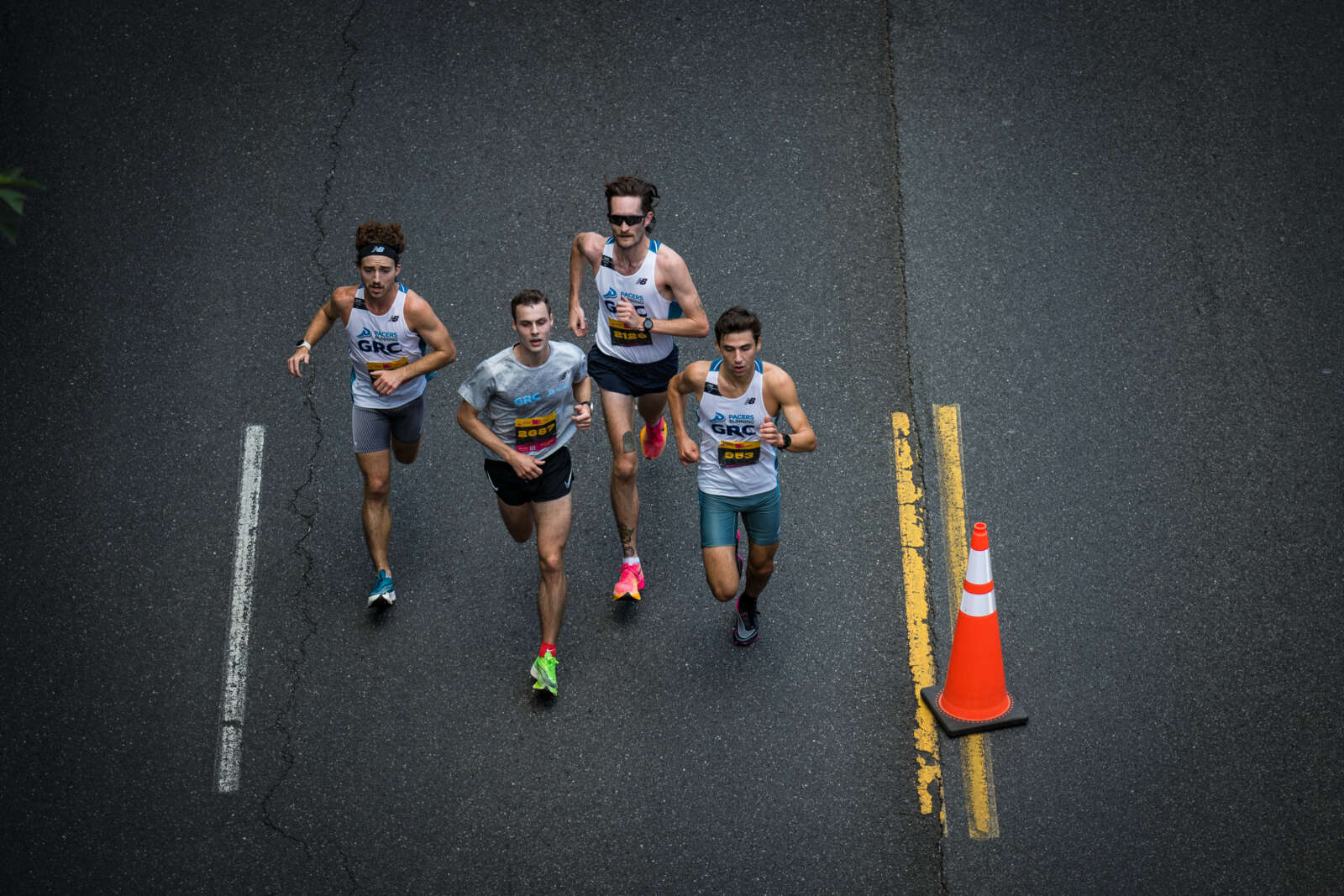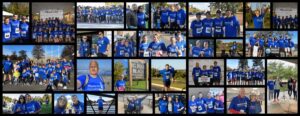
As the Montgomery Blair High School cross country team geared up for its weekly long run, Morgan Casey felt a pang of hunger. She would silently grind through the discomfort, and eventually it went away. This habit only worsened as the year wore on. By the end of her junior year, Casey was at least seven pounds lighter than the beginning of the year, a state champion, and anorexic.
She is not an anomaly. A 2007 study found that around 20 percent of female high school athletes self-reported disordered eating. Athletes tend to underestimate disordered eating and eating disorders, however, so the actual number could be much higher. This problem continues, and may even intensify, in college. One Columbia University study found that 35 percent of female college athletes were at risk of developing anorexia nervosa, and 58 percent were at risk of developing bulimia nervosa. Those with eating disorders face worsened physical health and a are also a high risk of suicide. With a mortality rate of about 10 percent, anorexia has been called the “most fatal mental health disorder” by the National Institute of Mental Health.
Reasons
Casey first started skipping lunch to save time. “I could just be filling my time with, instead of eating, with doing other things [like homework],” she says. Going into her senior year, however, she became much more conscious of how her weight correlated with her body image and her running times. She liked the way she looked when she wasn’t eating, and she was scared to gain back the weight she had lost.
Samantha Strong, co-founder of the Lane 9 Project, a nonprofit dedicated to educating active women about eating disorders and women’s health, echoes that sentiment. As a cross country runner in high school, she was terrified of going through puberty and gaining weight. “I was going to no longer look like a scrawny prepubescent girl, and that scared me,” she says. “I didn’t want my body to change.”
To avoid that change, Strong restricted her diet severely, to the point that she had osteoporosis at age 16, and didn’t get a period until she was 19 or 20. She wanted to “look like a runner,” and she was inundated with images of what female distance runners should look like: lean and muscular, with almost no body fat.
Casey can relate. “I look at Shalane Flanagan, or Emma Coburn and … I want to look like them,” she says. “I want to be really strong, really fit, really skinny.”
Strong points out that this idealization of thin bodies is attached to a belief in the running community that thinness will make you faster. “It’s very easy to equate success with a very specific body type,” she says.
Alexis Fairbanks, another Lane 9 co-founder, experienced this as a distance runner at SUNY Cortland. “If a girl ran faster than me and she was smaller than me, that’s where my mind went: ‘Well, she’s faster than me because she is thinner than I am,'” she says. To achieve thinness, Fairbanks restricted her food intake, labeling foods “good” and “bad.” For a while, she only allowed herself to eat pizza the night after a race, but eventually she cut out gluten and dessert entirely.
Casey skips meals for the same reason, believing that attaining her junior- year weight will allow her to race the same times as she did when she won the Maryland 4A State Championship in the 800 meters. Despite a change in coaches between her junior and senior year seasons, she attributes her slight slow-down to her weight gain.
This common belief — that thinness will result in fastness — is misinformed. Heather Caplan, a registered dietician and another co-founder of Lane 9, explains that weight is only one of many factors in race performance. When athletes begin college athletics, for example, they may rapidly improve due to the change in training, but they are often quick to attribute their improvement to their weight loss. “That faster time might be initially attributed to weight, but that’s probably not actually … the main driving factor,” Caplan explains.
Weight loss and food restrictions are not sustainable. “There’s eventually that threshold where [athletes] get injured, or they get slower, because they don’t have the energy to pull from,” Caplan says. According to her, the consequences of food restriction include “nutrient deficiencies, bone and muscle mass loss, increased risk of injury, chronic fatigue, [and] insomnia.” Female-bodied athletes risk losing their menstrual cycle, which can lead to infertility and unhealthy hormonal imbalances.
For Fairbanks, overtraining and underfueling led to a stress fracture during her sophomore year. Once recovered, she still wasn’t achieving the times she had run during her sophomore year’s indoor season. “I had the best race of my life, and then all the races after that just got slower and slower and slower,” she says.
Mayim Lehrich, a Wilson High School alumna, overtrained and underfueled to the point that she had to stop running competitively before her junior year indoor season was over. Her heart rate was low, so she stopped her indoor season to go into treatment for anorexia. “My body wasn’t doing well anymore,” Lehrich says.
The myth about weight loss and running times permeates the running community and puts athletes at a high risk for disordered eating and eating disorders. A 2008 study found that in “leanness” sports that emphasize size, like running, 46.7 percent of athletes had an eating disorder, compared to 19.8 percent of athletes in non-leanness sports and 21.4 percent of non-athletes.
Even coaches perpetuate the fallacy that thinness will lead to more success. Sasha, a college sprinter who wished to remain anonymous, says that on her team, the distance coach has strict rules about food and weight. “The coach tells [the distance runners] what they can and can’t eat, and if they’re doing poorly, she will tell them that they need to lose weight,” Sasha says.
The coach’s focus on eating only “healthy” foods has fostered an obsession with food among the distance runners. Some even have food Instagrams where they post pictures of their meals. “When they’re running together, they just talk about, like, all the yogurt they eat, or all the vegetables they eat,” Sasha says. “All they talk about is food.”
When she first started college, this obsession with healthy foods had an effect on Sasha. “It’s just hard when everyone else around you is eating and talking so much about food … you don’t want to look bad and eat something unhealthy,” she says. Once she realized how she was being affected by the distance runners’ eating habits, however, Sasha felt less impacted by them.
Living in an environment that is hostile to food leads most people to develop unhealthy relationships with it, however. Fairbanks lived in a house with five of her teammates, with whom food and body image were frequent topics of discussion. “We were definitely always talking about it in a really negative self-talk way … like, ‘I need to go do more core because I ate xyz,'” she says. Without anyone else to step in and help, the girls’ relationships with food and body image only worsened.
What can be done?
Though they are in the best position to intervene, most coaches and athletic programs lack the knowledge and resources to help athletes with eating disorders or disordered eating. A study from the Journal of American College Health found that even though 91 percent of athletic trainers working with female athletes had dealt with athletes who had eating disorders, only 27 percent felt they could confidently identify an athlete with an eating disorder. This gap, between the number of athletes with eating disorders and the number of athletic programs that can offer them adequate help, leaves many athletes to struggle with eating disorders and disordered eating on their own.
The Lane 9 Project believes that coaches have more of a role to play in preventing disordered eating and eating disorders in their athletes and offers to talk to high school coaches and teams about warning signs and how to address eating disorders.
“Coaches should just be constantly talking about proper nutrition, proper fueling and making their athletes really aware of the resources,” Fairbanks says.
She adds that coaches also need to be more educated about the signs of eating disorders and disordered eating, and shouldn’t shy away from asking athletes about their menstrual cycles. “I’m sure it’s really uncomfortable to talk to a high school girl and ask her if she’s getting her period, but I think that it’s something that needs to happen … for the health and the safety of your athletes.”
When Strong was a college triathlete, her coach sat down with her to discuss her eating disorder. She was relieved to finally have someone reaching out to her and recognizing her problem. “I’m really grateful that he sat me down and said ‘I want to help you achieve your goals, but you have to help yourself first,'” she says.
Recovery
Not everyone is as receptive to recovery. Casey resisted her coach’s efforts to ensure she wasn’t overtraining and underfueling. After he overheard her joking about skipping lunch, he started asking her before practice whether she had eaten lunch, adjusting workouts based on her answer. Most of the time, Casey lied to avoid easier workouts and told her coach that she had eaten. In Casey’s eyes, it wasn’t her coach’s responsibility to make sure she had eaten lunch. “[Eating enough is] not something you normally expect to have to check an athlete for,” she says.
Her coach, Michael Zick, said in an email that he would amend workouts for Casey based on how she was performing regardless of whether he believed she had eaten lunch. “If she said she had eaten and was just having a rough workout, then I’d just amend the workout or shut it down, and we’d get back to work as normal the next day,” he writes. “Kids don’t always tell you when they’re hungry, or when they’re sick … A coach’s job is to carefully watch their student-athletes to monitor if they’re well.”
Though Casey actively encourages other runners on her team not to skip meals and to properly fuel themselves, she is reluctant to accept her own diagnosis. She stopped seeing her nutritionist once she gained some weight, believing that she had her eating disorder under control. Once the track season started, though, she went back to skipping lunch. If she didn’t skip it entirely, she only ate enough food to stop her friends from worrying.
“You dive back into the world of training constantly … and competition and all that just circling around you to the point where you’re just like, ‘Okay, being small helps,'” Casey explains.
Part of her reluctance stems from not wanting to fit into a stereotype about female distance runners. “I don’t want to be that stereotype of a female long distance runner who has an issue with food and who has an eating disorder … even though I 100-percent do,” she says.
Lehrich, however, believes that part of her eating disorder stemmed from a desire to identify with the stereotype of small runners. “I always felt like I had to stay small,” she says. “I think I had the identity of a smaller runner.”
When Fairbanks was at the height of her food restriction, she was the heaviest she had ever been. The expectation that women with eating disorders are always skinny dissuaded her from seeking help.
Now, Fairbanks wants people to know that eating disorders can affect people of all sizes. “You don’t have to meet some sort of weight criteria or appearance criteria to deserve help,” she says. “I never felt like I could reach out for help, because I wasn’t stick thin.”
She finally recovered when she escaped collegiate competition and began running for enjoyment. When she first moved to Washington, D.C., she joined running clubs to meet new people and found a much more relaxed environment. “It was super-fit competitive runners and super-average runners who just love running, and then everyone went and had burgers and beer and fries afterward,” she says.
As she spent more time with these running groups, Fairbanks loosened her strict rules on food. “It kind of forced me to get a little uncomfortable and do things that I was afraid to do,” she says. “It was a very slow process of, like, ‘Oh, well, I’ve gone and had a beer and fries a few times in a month now and literally nothing happened.'”
After going into treatment multiple times, Lehrich says that her relationship with food is improving. “I try to look at food as fuel and something that I need and something that’s there to help me, not the enemy.”
To help think of her body more positively, Lehrich tries to focus less on aesthetics. “I try to think about what my body does for me, and what I’ve put it through, and how it’s still there for me now,” she says.
Caplan wants more people to know that recovery is always possible. “There is a world where you don’t always have to be thinking about [food] and you’re able to have mental and emotional energy for things that have nothing to do with your body or the food that you’re eating in any given moment,” she says. “There is a recovery world that is possible for you.”
Recent Stories
Looking for our race calendar? Click here Submit races here or shop local for running gear
James W. Foley Freedom Run
Inspired by the moral courage of freelance journalist James Foley, the mission of the nonprofit Foley Foundation is to secure the freedom of Americans held captive abroad unjustly by terrorist organizations or rogue states, and to promote journalist safety.
The
Kensington 8K Race
Since 1994, the Kensington 8K Race has been a favorite DC area fall race – a fun, fast event with beauty, challenge, and excitement. Run it this year on Saturday, September 21, 2024!
The 8K distance is $39, with a






